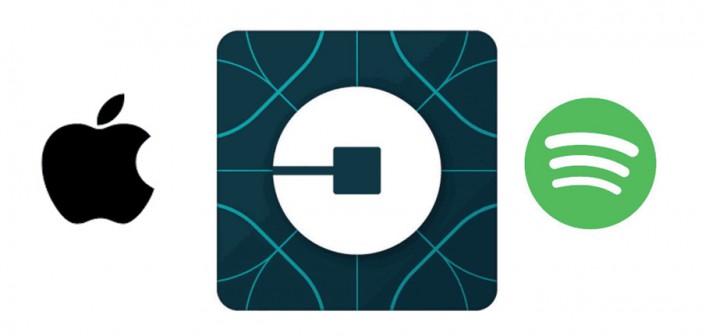Uber, Apple and Spotify are shaping the future of contextual content
Most of us are already familiar with the concept of screens in black taxis playing ads on a loop, whether we want them or not, writes San Sharma, Business and Technology Editor, Wunderman.
As captive audiences go, taxi passengers have little else to distract them, other than maybe the rants of the driver.
Those same cab drivers will soon have something else to moan about, and it’s coming from their bête noire – Uber.
Uber makes those ads on screens in black cabs look as increasingly obsolete as the requirement of the drivers to undertake ‘The Knowledge’
The taxi hailing company is launching a service that will let third parties serve up content or ads to users during their trip.
Uber is being careful to position the ‘Trip Experiences’ service as optional and permission-based.
But as a content platform, it certainly makes those ads on screens in black cabs look as increasingly obsolete as the requirement of the drivers to undertake ‘The Knowledge’.
What Uber is particularly able to do with ‘Trip Experiences’ is provide contextual content based on the apps you already use and the data that it has about your trip, like duration and destination.
It’s all part of a wider movement that bears out the mantra that if content is king then distribution is queen.
Spotify recently launched its video streaming service, announced last May. Using the same principles as its music service, Spotify will deliver video that is contextually relevant and based on the type of content its listeners already like.
While both Uber and Spotify are using data to expand their content distribution capabilities, Apple is also making increasing moves into the content market with the announcement that it is bankrolling a new TV series starring Dr Dre, which will likely be distributed via Apple Music.
This isn’t the first time Apple has paid for original content to release on the platform – in December it financed Taylor Swift’s “1989 World Tour Live” concert documentary, which is exclusively available on Apple Music.
Having just announced that it has hit the 11m subscriber mark, Apple Music will be hoping that the exclusive content will continue to drive subscriptions further.
All three of the above examples are clues that in order for branded content to succeed it must exist where consumers are already spending their time – and that’s not necessarily on digital destinations, such as brand websites.
It’s on social platforms, in mobile apps and in the back of Uber cabs. And, unlike taxi screens, tip seats and receipt pads, brands can use these new platforms to serve contextual content based on intelligent data, such as time, location and interest.




